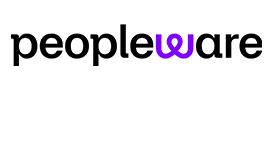Chris Dealy at injixo explains what skills-based routing is, why skills-based workforce planning is beneficial, and the solutions it offers.
Multi-skilled agents and skills-based routing (SBR) have been around almost since the dawn of call centres. Since then, call centres have evolved into omni-channel contact centres, handling not just calls but emails, web chats, social media interactions, and so on.
More than ever, it’s vital to schedule the right agents with the right skills at the right time in order to achieve your customer service goals while keeping occupancy levels at a sustainable level, all while maximizing efficiency.
But what exactly is multi-skilling? And how do you avoid the pitfalls and get the best from skills-based workforce planning in your contact centre?
What Is Skills-Based Routing?
Multi-skilling simply means that some or all of your agents possess more than one skill and can perform more than one task.
For example, you may have agents who can speak multiple languages or who are skilled in both servicing existing customers and signing up new ones.
Skills-based routing (SBR) is a function of contact centre platforms that can simultaneously queue calls and other customer interactions to more than one group of agents.
Depending on the centre’s needs, the administrator can define rules that distribute incoming interactions in a preferred order.
SBR routes interactions to the first available agent with the required skills. SBR enables contact centres to derive the maximum value from a multi-skilled workforce.
Skills-based workforce planning takes into account the skills of each individual agent when building schedules, so that customer demand is satisfied as efficiently as possible.
Why Is Skills-Based Workforce Planning ‘A Good Thing’?
Customers are more likely to have their issues resolved on first contact. That is because they are routed to the agents who are most qualified to handle their issue.
Multi-skilling and SBR reduce the need to fire-fight by moving agents from one type of interaction to another to follow differing peaks in workload. The system automatically finds the best resource for the workload mix, in real-time.
Most importantly, agent occupancy and utilization are boosted. Without a multi-skilled workforce and SBR, separate teams of agents are dedicated to a single type of contact, differentiated by subject or contact channel, for example.
With a multi-skilled workforce and skills-based workforce planning, the idle time between customer interactions is reduced, because agents with more than one skill will naturally spend less time waiting for an interaction they are qualified to handle.
The occupancy and utilization of multi-skilled agents will therefore tend to be higher than that of single-skilled agents. The greater the extent of multi-skilling, the fewer agents are required to handle the workload. This effect is known as pooling efficiency.
Having teams of agents dedicated to a single type of interaction offers no pooling efficiency. Consequently, in some centers, the goal is to train every employee to be a ‘universal agent’ who can handle any interaction.
This will deliver the maximum possible pooling effect and the greatest schedule efficiency. Unfortunately, it is often unrealistic, because:
- It typically requires weeks or months of training before an agent can handle all possible interactions proficiently.
- Some interactions require a special personality, for example, sales and collections.
- Some interactions require certification that can take months or years to obtain.
- Staff turnover is a fact of life in every call centre, so in many cases, the nirvana of a fully multi-skilled universal agent workforce can never be reached.
SBR helps centres to utilize staff in a way that may not be fully universal but is certainly more efficient than individual dedicated teams.
New hires can be trained on the different call types one by one, progressing once they have demonstrated mastery and gained confidence by handling the interactions that are routed to them.
No Free Lunch
Skills-based workforce planning presents a number of challenges:
- Shift swaps need to be handled with more care. Unless agents swap with colleagues who have exactly the same skill combination, there will be an impact on customer service.
- Similar challenges apply to time off, overtime and sickness. In a single-skill environment, planners and team leaders can easily find a substitute for an agent who calls in sick. With SBR, the set of skills that the absent agent possesses really matters. If the missing agent has three skills, ideally you must find another agent with those same three skills to replace them. It’s easy to imagine a situation where contacts arrive but no suitably skilled agent is present to handle them.
- Last but not least, the complexity of the workforce management (WFM) process soars. Modeling multi-skill pooling efficiency in the forecasting and scheduling process is not a trivial task.
Staffing Calculation
A fundamental challenge that skills-based workforce planning poses to WFM is that of determining how many agents are needed with each skill or combination of skills. In a single-skill or universal agent scenario, the Erlang C formula works well.
When agents have a combination of skills, however, Erlang C is completely lacking, since it takes no account of agent skills. It assumes that all agents are identical.
With a multi-skill workforce, the combination of agents and skills makes a big difference since there is a web of interdependencies.
For example, hiring staff with skill X may not seem to address a shortage of resourcing in skill Y. But if there are agents with skills X and Y already working in the centre, the new agents will free up agents with skill Y to take more calls.
Solutions
WFM software applications approach these challenges in a variety of ways. Some require the user to make simplifying assumptions and handle multi-skilled agents in the same way as single-skilled agents.
Others use complex simulation models that mimic the exact mix of calls and contacts in each interval, e.g. 15 minutes.
They experiment with different shift combinations for the multi-skilled agents on a trial-and-error basis until a solution is found. Simulation is certainly powerful but does have some downsides:
- The simulations can take a long time to run, even in a small- to medium-sized centre. That’s not only inconvenient, it makes experimentation less practical. More importantly, it limits your ability to quickly respond when actual contact volumes differ from the forecast or when several agents call in sick.
- Sickness and other shrinkage effects take place in every contact centre. A simulation can’t possibly predict which agents will be absent on a given day, and consequently, the validity of the schedules will be compromised.
- The simulation will inevitably use a simplified version of the truth. Schedules are typically built weeks in advance. When the day arrives, some agents may have left the business, new ones may have started, and others trained on new skills. Even a schedule for the upcoming week may need to be rebuilt based on shrinkage effects such as time off, team meetings, and training.
- What if you change the routing logic on your contact routing platform? Many centres make frequent changes to routing rules in response to changing business needs. These changes make the simulation results invalid and mean that you need to reprogram the simulation – a labor-intensive and time-consuming process.
Optimization
Another approach to skills-based workforce planning is to use sophisticated optimization algorithms instead of simulation. Optimization offers a number of important benefits:
- Optimization builds schedules that take account of individual agent skills to an acceptable level of precision much more quickly than simulation. This speed enables timely, effective responses to changes in volume, call arrival patterns, or agent availability.
- Intraday adjustments can be calculated quickly and staff more precisely matched to demand when the actual workload and staff skill mix are known.
- The initial setup and ongoing maintenance effort are dramatically reduced. You don’t need to update a complex configuration every time the routing logic is changed in the contact centre.
While the optimization approach may seem on the surface to be less precise than simulation, in reality, the optimization is completed quickly and typically results in schedule efficiency that is equivalent or even superior to that offered by simulation.
Schedule efficiency is a key WFM metric. Also known as ‘schedule fit’, it is a measure of the extent to which the ‘supply’ of agents matches the ‘demand’ for agents.
The goal is perfect coverage, i.e. zero under-staffing and zero over-staffing. Planners have a clear advantage if they can constantly optimize schedule efficiency, quickly and easily, even in a multi-skill environment. The advantages of optimization are clear.
Conclusion
Skills-based workforce planning is a difficult task. The challenges don’t stop with schedule building. You will be faced with operational challenges such as changing volumes, agent sickness, and business changes that affect average handling time (AHT).
Any of these effects may require you to revisit your schedules. Remember, the main goal of WFM is to consistently put the right number of people with the right skills in their seats at the right time.
Multi-skill scheduling is more complex than single-skill scheduling, but savvy planners can overcome the challenges by choosing the right methods and tools.
This blog post has been re-published by kind permission of Peopleware – View the Original Article
For more information about Peopleware - visit the Peopleware Website
Call Centre Helper is not responsible for the content of these guest blog posts. The opinions expressed in this article are those of the author, and do not necessarily reflect those of Call Centre Helper.
Author: Peopleware
Published On: 8th Jul 2024 - Last modified: 22nd Oct 2024
Read more about - Guest Blogs, Chris Dealy, Peopleware






 Peopleware is the award-winning, multi-channel cloud workforce management application for contact centers and customer support. Over 300 customers, ranging in size from 50 to over 4,000 seats, trust Peopleware to bring work and demand in perfect balance while embracing the constant change in their business. With Peopleware, you spend less time and effort on manual forecasting and scheduling, while maximizing efficiency and focusing on what really matters: your people and customers.
Peopleware is the award-winning, multi-channel cloud workforce management application for contact centers and customer support. Over 300 customers, ranging in size from 50 to over 4,000 seats, trust Peopleware to bring work and demand in perfect balance while embracing the constant change in their business. With Peopleware, you spend less time and effort on manual forecasting and scheduling, while maximizing efficiency and focusing on what really matters: your people and customers.









